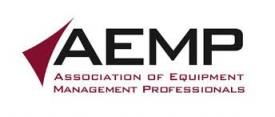Telematics can offer value to government fleet managers (with related video)
Government Product News recently queried government fleet experts on the value of telematics. Vehicle telematics is the convergence of wireless communications, location technology, and in-vehicle electronics to monitor the location, movements, and status of fleet vehicles.
Here are the views of Alex Brisbourne, president and COO of KORE. Alpharetta, Ga.-based KORE is a provider of machine-to-machine (M2M) network services. The firm offers global connectivity over GSM, CDMA & satellite technologies. The company delivers network services to application solution providers and enterprises through a single, unified interface.
GPN: What is the value of telematics in government fleets?
Alex Brisbourne: Vehicle telematics applications, quite simply, allow government agencies to simultaneously monitor vehicle, driver and cargo while in-route, including details such as the temperature of the storage-hold (if necessary), vehicle speed, driver behavior (i.e., high acceleration and braking), cargo door openings, idling time, and when a given vehicle needs service.
All of these data get communicated in real-time over machine-to-machine (M2M) networks, so that fleet management personnel can streamline routing, workforce productivity, asset utilization and maintenance programs. By equipping vehicles with telematics, agencies effectively use fewer resources — fuel being a prime example — which in turn translates into lower operational costs overall.
GPN: What are some key benefits of telematics in government fleets?
AB: Although clear benefits from better asset control and maintenance management are fiscally compelling on their own, the biggest boon that telematics hold for the future of government fleets probably comes in the area of safety — for both government employees and third parties.
“Driver Assistance” applications continue to evolve. They are now able to detect potentially unsafe situations at an early stage, then warn and actively support the driver, and, if necessary, intervene automatically in an effort to avoid a collision. Examples include detecting driver drowsiness, predictive automatic braking, lane departure assistance, cross traffic alert when backing up, and pedestrian detection beyond what the naked eye can see. For fleet drivers who are on the road consistently, these systems would be invaluable.
The fiscal effects of accident mitigation can range far and wide, namely by avoiding workers’ compensation and healthcare claims, civil suits and ballooned insurance premiums. Many insurers even offer credits upfront for vehicles that have these systems in place.
GPN: Thank you, Alex Brisbourne, for your views.
KORE is a mobile virtual network operator (MVNO) that packages multiple cellular and satellite carriers together in one connectivity resource so that devices never hit a dead zone in the field, and can send their relatively small, but frequent, bursts of data without breaking the airtime bank. Go here for information on KORE’s fleet services.
Telematics standard update 
On a related note, work is progressing on a new AEM/AEMP Telematics Standard. In 2013, representatives from the Association of Equipment Management Professionals (AEMP) and the Association of Equipment Manufacturers (AEM) agreed on an expanded set of asset data points and fault codes to be included in the original AEMP Telematics Standard. The new AEM/AEMP standard has 19 data points and 42 fault codes. A final version of this standard should be available no later than the end of 2014. Go here for more information.
In this video, Alex Brisbourne of KORE discusses M2M trends and considerations and how to choose a mobile virtual network operator.
_____________
To get connected and stay up-to-date with similar content from American City & County:
Like us on Facebook
Follow us on Twitter
Watch us on Youtube




















